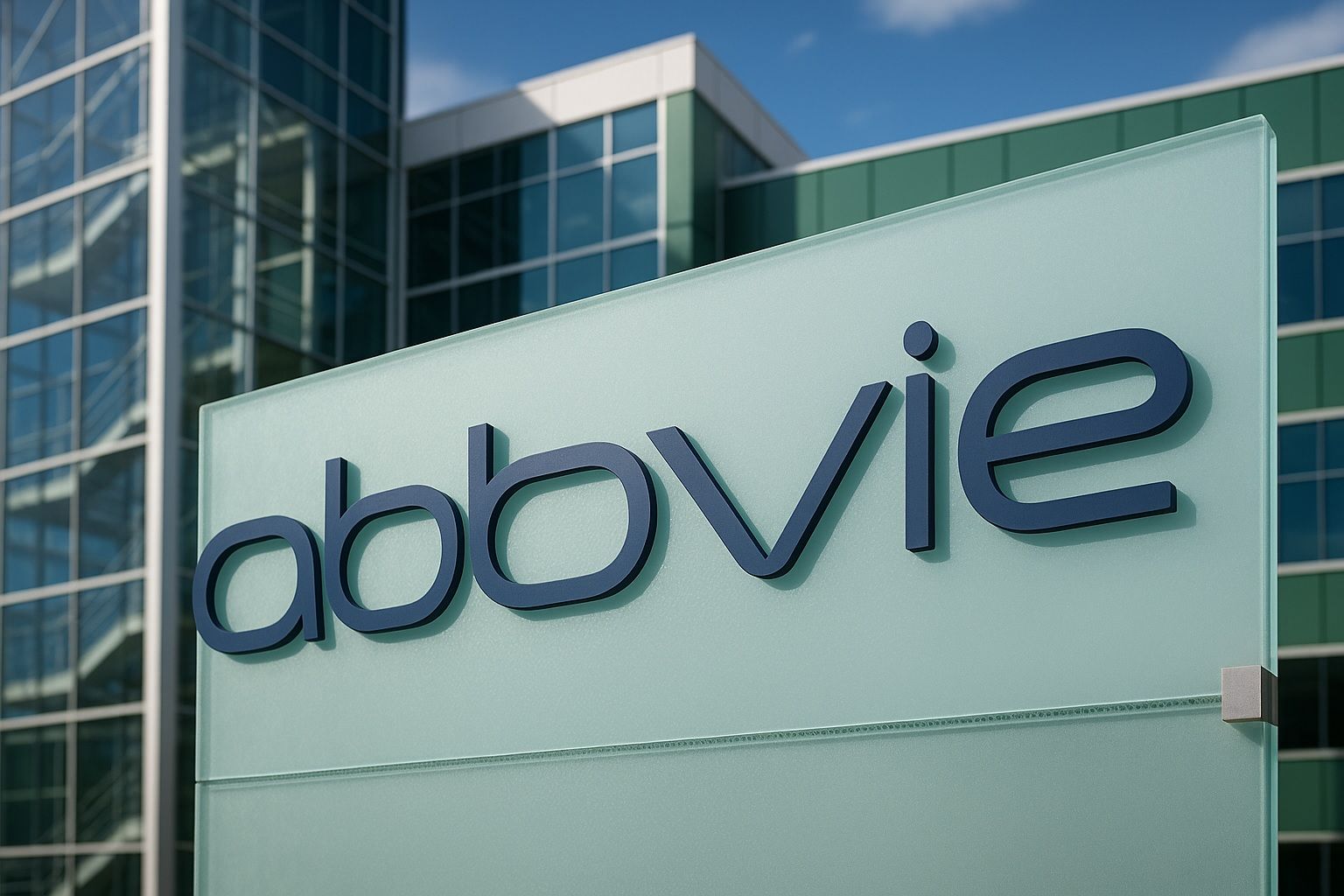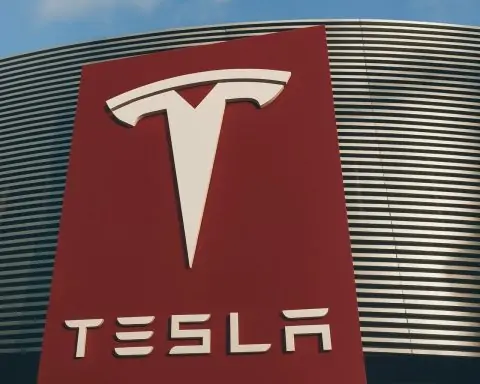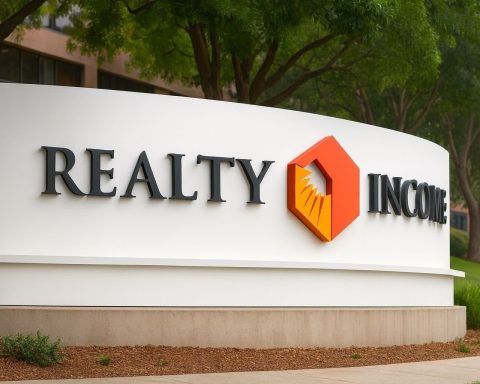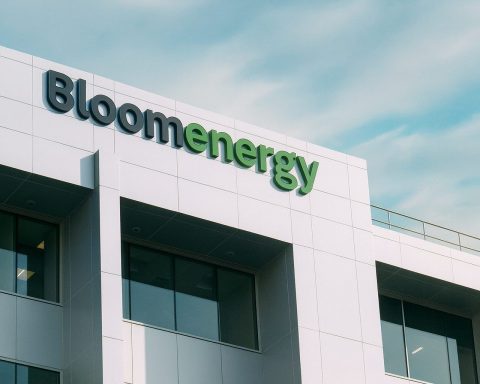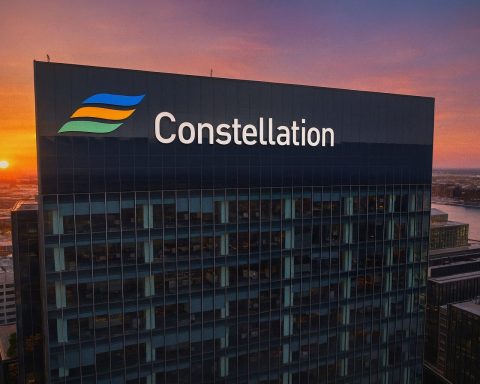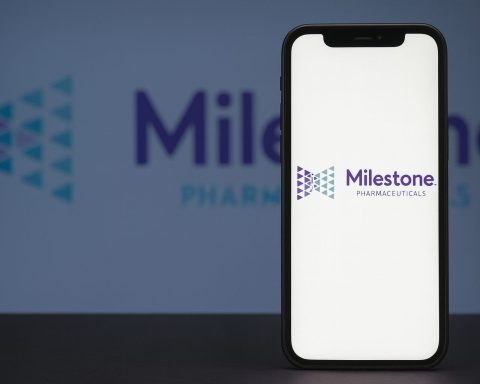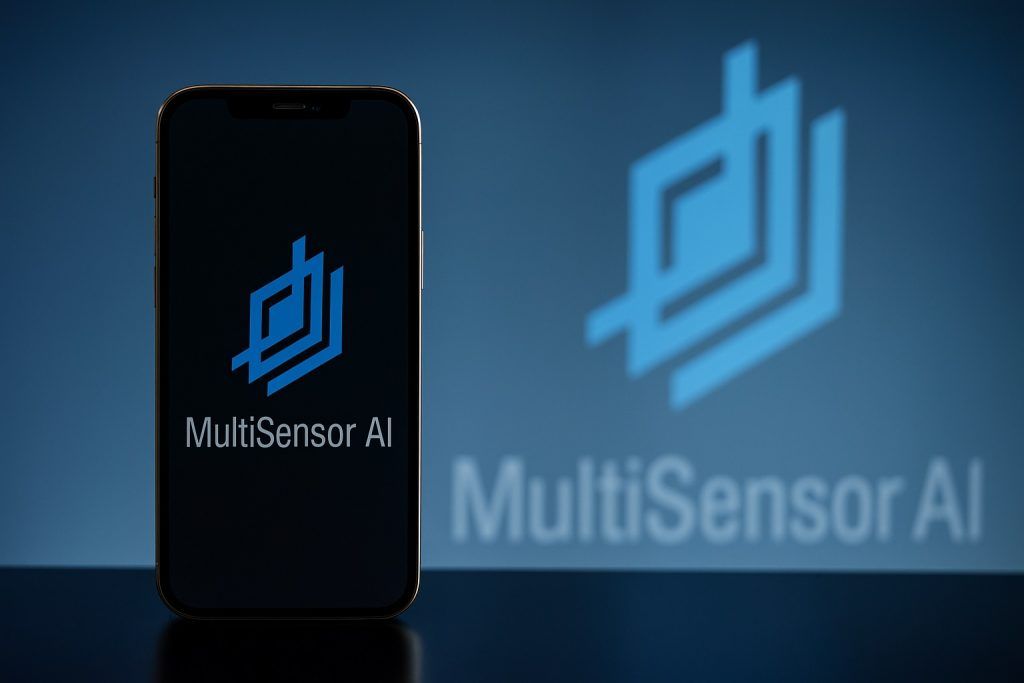- Stock Near All-Time Highs: AbbVie (NYSE: ABBV) shares trade around $228 as of late October 2025, up roughly 28% year-to-date – far outpacing both the broader S&P 500 (~16% YTD) and most pharma peers [1] [2]. The stock hit a 52-week high of about $244.8 on Oct. 1, 2025 [3] after positive pipeline news, and remains in a bullish uptrend above key technical levels (recently >$218 50-day MA and >$197 200-day MA) [4].
- Q3 Earnings Beat & Raised Guidance:Q3 2025 results, reported Oct. 31, showed revenue $15.78 B (+9.1% YoY) – topping forecasts of ~$15.6 B [5] – as new drugs helped offset the Humira decline. Adjusted EPS was $1.86, beating consensus $1.77 [6], while GAAP EPS was just $0.10 due to a one-time $2.7 B R&D charge. AbbVie raised its full-year 2025 EPS outlook to $10.61–$10.65 (from ~$10.4 prior) [7] [8], signaling confidence in a second-half rebound.
- Dividend Hike Despite High Payout: Backed by ~$20 B in annual free cash flow [9], AbbVie’s Board approved a 5.5% dividend increase for 2026 (quarterly payout rising from $1.64 to $1.73 per share) [10]. The stock yields about 2.8% [11] – a much richer income stream than high-growth peers like Eli Lilly (~0.7%) [12]. Notably, the current payout ratio exceeds 300% of GAAP earnings [13] (due to large non-cash charges), but management emphasizes that cash flows comfortably cover the dividend, and AbbVie’s status as a Dividend Aristocrat continues unabated [14] [15].
- New Drugs Driving Growth: AbbVie is rapidly replacing Humira’s lost sales with its next-generation immunology drugs. In Q3, Skyrizi sales surged ~47% to $4.7 B and Rinvoq sales jumped ~35% to $2.18 B [16] [17], more than offsetting Humira’s 55% plunge to $0.99 B [18] [19]. The FDA approved Rinvoq’s expanded use for ulcerative colitis and Crohn’s on Oct. 13 [20], and a head-to-head trial reported Oct. 20 showed Rinvoq achieving significantly higher remission rates in rheumatoid arthritis than Humira [21]. Just this week, AbbVie also announced positive Phase 3 results in alopecia areata, with over half of patients on Rinvoq achieving ≥80% hair regrowth at 24 weeks [22] – underscoring the breadth of its pipeline momentum.
- Big Moves & Future Catalysts: AbbVie has been investing heavily to secure long-term growth. In recent months it acquired Capstan Therapeutics (in vivo CAR-T technology) and bretisilocin from Gilgamesh Pharma (a novel psychedelic for depression) for over $10 B combined [23], bolstering its neuroscience and immunology pipeline. The company is also expanding manufacturing capacity (breaking ground on a new $195 M Illinois plant, with $10 B more U.S. investment planned) [24]. Analysts expect growth to accelerate – CEO Robert Michael predicts AbbVie’s total revenue will exceed its prior Humira-era peak by 2026 [25], and the company projects its newer drugs (Skyrizi, Rinvoq, etc.) will surpass $31 B in annual sales by 2027 [26]. Upcoming catalysts include late-2025 FDA decisions and additional data readouts, which will be pivotal for sustaining AbbVie’s momentum into 2026.
- Wall Street Bullish – but Watching Risks: Most analysts are upbeat on AbbVie. The stock carries a “Moderate Buy” consensus with ~18 of 27 analysts rating Buy and an average price target in the mid-$230s [27] (slightly above the current price). Several firms have recently raised their targets into the $240–$275 range – e.g. Wolfe Research to $275 (Oct. 23) and BMO to $258 (Oct. 21) [28] – citing AbbVie’s pipeline wins and reasonable valuation (~16× forward earnings, notably cheaper than Eli Lilly’s ~29×) [29]. J.P. Morgan’s Chris Schott said a patent deal extending Rinvoq’s exclusivity to 2037 gives AbbVie “several more years of runway” on a key growth driver [30], and others estimate it could add ~$2 B to Rinvoq’s peak sales [31]. Key risks that analysts and investors monitor include the ongoing erosion of Humira (biosimilar competition), intensifying competition for older drugs like Imbruvica [32] [33], and political/regulatory pressures on drug pricing. So far, however, AbbVie’s diversified portfolio and proactive R&D investments have helped it navigate these challenges and maintain investor confidence.
Stock Performance & Technical Trends
AbbVie’s stock has been a standout performer in 2025. Shares currently hover around $228–$229, up roughly 28–30% since January and near their highest levels on record [34] [35]. This vastly outperforms both the S&P 500 (up ~16% YTD) and the broader pharma industry (up mid-single-digits) [36] [37] – a testament to investors’ optimism in AbbVie’s post-Humira strategy. The stock’s 52-week range spans from a low of about $163.8 to the recent peak around $244.8 on October 1st [38].
Several catalysts have fueled this rally. In mid-September, AbbVie announced a patent settlement securing no U.S. generics for Rinvoq until 2037, effectively extending that franchise’s exclusivity by four years [39]. The news triggered a one-day 4% jump in ABBV shares [40], as analysts cheered the added runway for one of AbbVie’s key growth drugs. J.P. Morgan analyst Chris Schott noted the deal gives AbbVie “several more years of runway on one of its key growth drivers,” buying valuable time to develop other therapies ahead of major patent expirations in the 2030s [41]. William Blair’s Matt Phipps added that protecting Rinvoq longer could add about $2 B to its peak sales potential [42] – optimism that helped fuel the late-summer stock surge.
In early October, however, AbbVie’s share price saw a brief pullback. The company revealed on Oct. 3 that it would take an unexpected $2.7 B charge for in-process R&D in Q3, forcing a downward revision of 2025 profit forecasts [43]. Including this one-time write-off, AbbVie slashed its full-year adjusted EPS guidance from ~$12.00 to $10.38–$10.58 [44], well below prior expectations [45]. This surprise dragged ABBV off its highs, with the stock dipping into the low-$230s by mid-October [46] as some investors took profits.
Even so, technical signals remain broadly positive. AbbVie quickly stabilized and has since traded comfortably above long-term support levels – recently >$228, versus roughly $218 and $197 for its 50-day and 200-day moving averages, respectively [47]. The late-September spike had pushed momentum indicators into overbought territory (the RSI had spiked above 70), but the subsequent consolidation cooled off those readings [48]. As of late October, AbbVie’s RSI and momentum have moderated back to mid-range, indicating the stock “worked off” its froth while largely holding onto gains [49]. In fact, over the last week before earnings, ABBV shares were essentially flat, suggesting a “wait-and-see” mode among shareholders ahead of the Q3 report [50]. Overall, the stock’s ability to sustain most of its YTD rally – and remain in an uptrend – reflects investor focus on AbbVie’s long-term fundamentals and dividend appeal, even amid short-term volatility.
Recent News & Catalysts
FDA Approvals & Pipeline Progress
AbbVie’s investment in R&D is clearly paying off with a string of product successes in recent weeks. Immunology remains the spotlight: on October 13, the FDA approved an expanded label for AbbVie’s JAK inhibitor Rinvoq (upadacitinib), allowing its use earlier in the treatment of ulcerative colitis and Crohn’s disease [51]. This means that in inflammatory bowel disease, Rinvoq can now be prescribed before anti-TNF biologics in certain patients – a significant broadening of its market. Just a week later, AbbVie announced headline results from a major trial on October 20: in a head-to-head Phase 3 study for rheumatoid arthritis, Rinvoq outperformed Humira by a wide margin [52]. Specifically, about 43% of RA patients on Rinvoq achieved clinical improvement versus only 22% on Humira, and Rinvoq patients were roughly twice as likely to reach full symptom remission [53]. Dr. Andrew Anisfeld, AbbVie’s VP of global medical affairs in immunology, said these positive results “strengthen the growing body of evidence” for switching to new mechanisms like Rinvoq [54]. For investors, this trial win reinforces confidence that AbbVie’s new drugs can successfully step into the shoes of aging Humira.
And the momentum continues: in late October, AbbVie scored another pipeline victory – this time in alopecia areata (autoimmune hair loss). On Oct. 29, the company reported that Rinvoq met its Phase 3 trial endpoints in alopecia, with 45–55% of treated patients achieving at least 80% scalp hair coverage after 24 weeks [55]. Key secondary goals (like eyebrow/eyelash regrowth and even full scalp coverage in a subset of patients) were also met [56]. Rinvoq’s safety profile in alopecia was consistent with prior indications, with no new risks flagged. This opens the door for AbbVie to potentially file Rinvoq in yet another indication, extending its reach beyond the already approved uses in rheumatoid arthritis, psoriatic arthritis, ulcerative colitis, atopic dermatitis, and more. The alopecia results, along with the recent FDA nod in inflammatory bowel disease, underscore how AbbVie is leveraging multiple indications to maximize Rinvoq’s value. Together with Skyrizi – AbbVie’s other fast-growing immunology drug (an IL-23 inhibitor) – these treatments are driving robust growth as Humira revenues decline. In the first half of 2025, combined sales of Skyrizi and Rinvoq reached $11.6 B, and they are on track for over $25 B this year, with projections of >$31 B by 2027 [57].
Outside immunology, AbbVie’s other franchises have delivered notable news as well. In oncology, AbbVie and partner Genmab recently launched Epkinly (epcoritamab), a new antibody therapy for lymphoma, and have been showcasing data for Teliso-V, an experimental lung cancer drug (though one trial did not meet its endpoint this quarter). Perhaps more significantly, competition is heating up: for example, Eli Lilly reported in July that its new BTK inhibitor Jaypirca showed superior efficacy to AbbVie’s Imbruvica in a leukemia study [58]. Imbruvica (a blockbuster AbbVie co-markets with J&J) saw sales fall ~15% to $706 M in Q3 [59] [60], so AbbVie is pushing next-gen cancer therapies like Venclexta (which grew ~7% to $726 M) and new acquisitions to fill the gap. In neuroscience, AbbVie’s portfolio (including Botox Therapeutic, Vraylar for psychiatry, and migraine drugs) grew a strong 20% YoY in Q3 [61]. The company is also expanding uses for Botox beyond cosmetics – recent Phase 2 data showed Botox injections significantly reduced upper-limb tremors in patients, hinting at a new therapeutic niche [62]. Meanwhile, AbbVie’s aesthetic products (like Botox Cosmetic and Juvederm fillers) have faced a post-pandemic slowdown, with aesthetic revenue down ~4% YoY [63]. Management noted softer demand in some markets, but expects stabilization as Allergan Aesthetics (acquired in 2020) continues to diversify AbbVie’s revenue base.
M&A, Investments & Other Developments
To fuel its pipeline beyond internally developed drugs, AbbVie has been highly active on the M&A front. In 2023–2025, the company spent over $20 B on acquisitions [64], targeting innovative therapies in its core areas of immunology and neuroscience. Just in the last few months, AbbVie closed two notable deals:
- Capstan Therapeutics (July 2025): AbbVie acquired this biotech (focused on in vivo CAR-T gene therapies) in a deal worth up to ~$2.1 B [65]. Capstan’s technology uses targeted lipid nanoparticles to deliver CAR-T treatments inside the patient – a cutting-edge approach that could yield off-the-shelf cell therapies for diseases like cancer and autoimmune disorders. This purchase adds a potential first-in-class in vivo CAR-T candidate (for B-cell cancers) to AbbVie’s pipeline [66], complementing its existing cancer immunotherapy portfolio.
- Gilgamesh Pharmaceuticals’ Bretisilocin (Oct 2025): AbbVie agreed to pay up to $1.2 B to acquire bretisilocin (GM-2505), an investigational psychedelic-derived therapy for depression [67]. Rather than buying the entire company, AbbVie is acquiring rights to this program while Gilgamesh will spin off other assets [68]. Bretisilocin, a novel compound for major depressive disorder, expands AbbVie’s psychiatry pipeline (where it already markets Vraylar for bipolar/schizophrenia). This move shows AbbVie’s willingness to bet on next-generation neuropsychiatric treatments (like psychedelics) to address tough-to-treat mental illnesses.
Those mid-2025 deals – together costing over $10 B – underscore AbbVie’s determination to bolster its pipeline in cutting-edge fields】 [69] [70]. Company leadership has been vocal that smart acquisitions and partnerships will be key to surpassing the Humira era. As CEO Robert Michael put it, AbbVie expects net revenues to reach “new highs within a couple years” of Humira’s patent loss, thanks in part to bringing in new drugs through business development [71] [72]. In addition to buying assets, AbbVie is investing in its own capacity: it recently broke ground on a new $195 M manufacturing facility in North Chicago to produce immunology, oncology, and neuroscience medicines (operational by 2027) [73]. The company also announced plans to spend $10 B on U.S. expansions over the next decade [74] – a sign of confidence in its growth prospects and a response to political pressure to localize pharma production.
On the legal and regulatory front, AbbVie faces the typical challenges of a big pharma. It is well-known for vigorously defending its patents (notably erecting a “patent thicket” around Humira in the past). In late September, Arcturus Therapeutics sued AbbVie alleging theft of mRNA drug delivery trade secrets [75] – an IP dispute that observers are watching, though such suits are not uncommon in the industry. AbbVie also was dealt a setback when it (along with co-plaintiff Novartis) lost a court bid to block a new Maine drug pricing law aimed at reducing certain drug costs [76]. Thus far, these issues haven’t materially impacted the stock, but they underscore the backdrop of political risk (e.g. drug pricing reforms, Medicare negotiations) that looms over all large pharmaceutical companies. On the positive side, as mentioned, AbbVie’s biggest legal win this year was securing that Rinvoq patent settlement through 2037 – a strategic victory that forestalls generic competition on one of its fastest-growing drugs [77]. Investors view such moves as critical to extending AbbVie’s cash flows and giving its R&D engine time to deliver the “next big thing.”
Q3 2025 Financial Results
AbbVie’s third-quarter earnings report (released Oct. 31, 2025) provided a clearer picture of how well the company is managing the Humira loss – and the numbers were encouraging. Worldwide net revenue for Q3 was $15.776 B, up 9.1% year-on-year on a reported basis (8.4% operationally) [78]. This beat Wall Street’s expectation of around $15.6 B [79] and marked an acceleration from ~6.6% growth in Q2. The top-line beat was driven by strength in AbbVie’s immunology portfolio (Skyrizi +46.8%, Rinvoq +35.3%, as detailed earlier) and solid gains in neuroscience (+20% YoY) [80] [81]. These more than compensated for declines in Humira (–55% YoY to <$1 B for the quarter) and slight dips in the oncology (–0.3%) and aesthetics (–3.7%) segments [82] [83]. It’s worth noting that Skyrizi alone is now nearly five times the size of Humira in the U.S. for AbbVie, highlighting how dramatically the revenue mix has shifted in just a couple of years.
On the earnings front, GAAP net income was $186 M (down sharply due to the large R&D charge), which equated to a GAAP EPS of $0.10 [84]. However, adjusting for amortization and that one-time IPR&D impairment, adjusted EPS came in at $1.86 [85]. This handily beat analyst estimates of ~$1.77 and demonstrated that, excluding special charges, AbbVie’s underlying profitability remains strong. The massive gap between GAAP and non-GAAP earnings ($0.10 vs $1.86) was entirely due to that previously flagged $2.7 B research write-off. AbbVie’s adjusted gross margin for Q3 was ~83.9%, and it maintained an adjusted operating margin ~30.9% [86] [87] – robust figures, although a bit lower than historical norms due to the ongoing Humira decline and heavy R&D spend. Notably, Skyrizi and Rinvoq’s success is higher-margin (being internally developed) and helped support those margins.
Crucially, AbbVie updated its guidance in light of the better-than-expected results (and perhaps a slightly improving outlook). The company raised its full-year 2025 adjusted EPS forecast to $10.61–$10.65 [88]. This is up from the $10.38–$10.58 range given after the R&D charge announcement [89], and suggests management now sees Q4 coming in stronger than initially feared. The new guidance still reflects a notable drop from 2024’s EPS (for context, AbbVie earned ~$13.77 in adjusted EPS in 2024, pre-Humira LOE), but the outlook is less dire than analysts anticipated when the write-off was first disclosed. In the Q3 release, CEO Robert Michael struck an optimistic tone, noting “significant momentum across key areas of our portfolio” and “great progress advancing our pipeline,” and he affirmed that AbbVie expects to return to total revenue growth and “exceed [our] previous peak” in the next couple of years [90] [91].
Beyond earnings, shareholder returns remain a priority. Alongside the Q3 results, AbbVie announced that its Board approved a 5.5% increase in the quarterly cash dividend – from $1.64 to $1.73 per share starting in Feb 2026 [92]. This will mark AbbVie’s 52nd consecutive annual dividend increase (counting its years within Abbott pre-spin-off), keeping it in the elite S&P Dividend Aristocrats index [93]. Despite near-term earnings dips, AbbVie’s generous dividend is sustained by over $20 B in yearly free cash flow [94]. The company’s CFO has emphasized that funding the dividend (and ongoing debt reduction from the Allergan deal) remains comfortable, given AbbVie’s cash-generating ability. Still, the payout ratio is unusually high at the moment – the $6.56 annual dividend per share equates to over 300% of current GAAP earnings [95]. This metric will normalize as one-time charges roll off and earnings recover; in the meantime, it highlights AbbVie’s willingness to return cash to shareholders even through an earnings trough. Income-focused investors have few alternatives in pharma with such yield and dividend growth history, which is one reason ABBV continues to find support even when growth investors rotate toward flashier biotech stories.
Competitive Positioning vs. Peers
AbbVie today is among the world’s largest pharmaceutical companies – recently ~$408–413 B in market capitalization [96], making it a top-3 pharma by market value. Its closest peers include Johnson & Johnson, Eli Lilly, Merck, Pfizer, and Novartis, among others. AbbVie’s investment thesis has elements of both offense and defense: it offers the stability and cash flows of a big pharma, yet has growth drivers more akin to a biotech. How does it stack up against rivals?
In terms of growth outlook, AbbVie is transitioning from a Humira-centric era (Humira was the world’s best-selling drug for years) to a new chapter led by Skyrizi, Rinvoq, and an expanded portfolio (bolstered by Allergan’s products and recent acquisitions). This year AbbVie expects ~7–8% revenue growth and a near-20% EPS decline (due to Humira erosion and one-time costs) – a temporary dip before growth resumes. By contrast, Eli Lilly – boosted by its mega-blockbuster obesity/diabetes drugs (Mounjaro and Zepbound) – is in hyper-growth mode with consensus forecasts for +37% sales and +77% EPS growth in 2025 [97]. Lilly’s stock price has reflected that, soaring in 2023; though in 2025 it cooled to a single-digit YTD gain as of October, vs. AbbVie’s nearly +30% YTD move [98]. Simply put, Lilly is viewed as a pure growth story (with a rich valuation to match), whereas AbbVie is seen as a more balanced growth-and-income play. Analysts at Zacks captured this contrast: “2025 sales and EPS consensus imply +7.6% and +18.9% growth for AbbVie, versus +37.0% and +76.7% for Lilly” [99]. However, AbbVie’s forward P/E (~16×) is far lower than Lilly’s (~29×), and even a bit below the pharma industry average (~15.9×) [100] – suggesting AbbVie’s stock already prices in a lot of Humira pessimism. For investors, the question is whether AbbVie can outperform these modest expectations (as it has been doing in 2025 so far) and deliver upside surprises through its pipeline.
Compared to other big pharmas: Merck and Bristol Myers are also dealing with upcoming patent cliffs (Keytruda for Merck, Revlimid/Opdivo for BMS), and their growth profiles are somewhat muted mid-decade, similar to AbbVie’s dip. Pfizer had a windfall from COVID-19 vaccines but is now experiencing a sharp decline in revenues and is scrambling to refill its pipeline, leading its stock to lag in 2025. In contrast, AbbVie’s decline has been far less severe than Pfizer’s, and AbbVie’s aggressive deal-making (e.g. the Allergan acquisition in 2020, and smaller buys like Capstan/Gilgamesh in 2025) has strengthened its hand. AbbVie also benefits from diversification: beyond immunology and oncology, it has leading franchises in aesthetics (Botox, Juvederm) and neuroscience (Vraylar, Botox Therapeutic, migraine drugs) that many peers lack. This gives it multiple avenues for growth. Johnson & Johnson remains larger in revenue and also diversified (medical devices, consumer health), but J&J’s pharma division has grown slower than AbbVie’s, and J&J now faces its own Humira-equivalent cliff with Stelara biosimilars. AstraZeneca and Novartis are often seen as having strong pipelines too, but AbbVie’s execution in navigating the Humira cliff has drawn praise relative to how some peers fared in past patent losses.
A key competitive metric is R&D productivity and pipeline depth. Here, AbbVie spends heavily (about $6.5 B on R&D in the first 9 months of 2025) and has over 90 clinical programs ongoing. The company’s ability to generate new blockbusters like Skyrizi and Rinvoq – which are on track to possibly exceed Humira’s peak sales in a few years – speaks to its R&D and commercial strength. AbbVie’s pipeline spans immunology (next-gen antibodies, oral immunologics), oncology (novel blood cancer drugs, solid tumor therapies, and cell therapies via Capstan), neuroscience (potential disease-modifying Parkinson’s therapies, fast-acting depression drugs, etc.), and more. In immunology, AbbVie competes with the likes of Johnson & Johnson (which had Stelara and Tremfya), Novartis (Cosentyx, Entresto in related autoimmune conditions), and Pfizer (Xeljanz, Cibinqo JAK inhibitors). Rinvoq’s recent success against Humira in trials could help AbbVie position it as a preferred option even against competitors’ drugs in rheumatoid arthritis and other indications. In oncology, AbbVie’s Imbruvica is facing pressure from Lilly’s Jaypirca (as noted) and from AstraZeneca/J&J’s Calquence in the CLL/lymphoma space. AbbVie’s strategy has been to pair Imbruvica with Venclexta (a different mechanism for leukemia) and develop new agents (like epcoritamab for lymphoma) to stay competitive. In aesthetics, AbbVie’s Botox enjoys a strong brand but is seeing competition from newer rivals like Daxxify (Revance Therapeutics) and others; AbbVie’s response has been leveraging its broad distribution and exploring new indications (e.g. depression – yes, Botox is being tested for mood disorders).
Overall, AbbVie’s competitive position can be summed up as: a pharma leader in transition, executing well on replacing an epoch-defining product. The company has so far navigated the Humira cliff more adeptly than skeptics expected – thanks to savvy lifecycle management (e.g. patent settlements delaying competition [101]) and by launching a suite of new drugs that are collectively on track to exceed Humira’s sales at peak [102]. It still faces fierce competition (no one in Big Pharma is without challenges), but AbbVie has shown it can play both offense (investing in growth areas) and defense (protecting franchises and maintaining shareholder rewards). This balanced approach sets it apart as a “resilient growth” story in the sector, whereas some peers are either pure growth (but high-risk) or pure income (but low-growth). As The Motley Fool recently noted, institutional investors see AbbVie as a core healthcare holding that offers “stable growth… and a reliable dividend” – a combination that’s attractive in volatile markets [103].
Analyst Sentiment and Stock Outlook
Wall Street’s view on AbbVie has grown increasingly optimistic through 2025. The company’s successful handling of the Humira loss – and its steady flow of new drug wins – have led many analysts to boost their forecasts. As of late October, the consensus rating on ABBV is “Moderate Buy” leaning toward outright Buy, with roughly 18 out of 27 analysts rating it a Buy/Outperform and only a few Holds, virtually no Sells [104]. The average 12-month price target is in the mid-$230s (around $235), just above the current trading level [105]. That might suggest limited upside on average – however, it’s worth noting that several top-tier analysts have targets well above the mean. For instance, Wolfe Research raised its target to $275 (from $235) on Oct. 23 while reiterating an Outperform [106]. BMO Capital hiked its target to $258 (from $240) on Oct. 21 [107]. Guggenheim recently went to $242 (from $227) with a Buy rating [108], and Raymond James earlier upped its target to $250. Over the summer, we also saw Morgan Stanley move to ~$255 and J.P. Morgan to $235 with overweight ratings [109]. In short, many analysts have been playing “catch-up” to AbbVie’s share price and fundamentals, revising their models upward as confidence builds in the company’s growth trajectory.
What’s driving their bullishness? Analysts commonly cite a few key factors:
- Pipeline Success & Replacement of Humira: AbbVie’s ability to replace Humira’s revenue is exceeding expectations. The continued strong uptake of Skyrizi and Rinvoq (which together could be >$20 B/year in a couple of years) and promising developments in other programs (Rinvoq in new diseases, Skyrizi in Crohn’s, oncology drugs like epcoritamab, etc.) give credibility to management’s claim that total sales will hit new highs by 2025–26 [110]. This easing of the “Humira cliff” fear is a major sentiment booster.
- Diversification & Earnings Stability: Unlike some biotechs that live or die by one product, AbbVie now has a diversified portfolio across immunology, oncology, neuroscience, and aesthetics. Its Allergan acquisition (bringing Botox and other assets) is cited as having added a durable cash-flow stream beyond pure drugs. Analysts also appreciate AbbVie’s shareholder-friendly financials – e.g. the hearty dividend (yield ~2.8%) and commitment to using cash flow for buybacks or debt paydown if appropriate [111] [112]. This makes ABBV a relatively lower-risk holding in the pharma space.
- Valuation & Financial Metrics: Despite its run-up, AbbVie’s stock is not viewed as expensive. It trades around 16× forward earnings, which is reasonable given ~8–10% annual revenue growth expected after 2025 and mid-teens EPS growth as margins recover [113]. AbbVie’s return on equity is extraordinarily high (~112%) thanks to efficient use of capital and the Allergan synergy effects [114]. One DirectorsTalk analyst noted “AbbVie’s robust pipeline and high-impact treatments make it a stock worth considering,” highlighting its commanding market positions and strong ROE [115]. In sum, the valuation leaves room for upside if AbbVie can outperform its (now conservative-looking) guidance in 2025 and resume double-digit earnings growth thereafter.
- Institutional Ownership & Sentiment: Nearly 70% of AbbVie’s shares are held by institutions and funds [116], a sign of strong support from big investors. In recent months, major holders have largely added or maintained positions, seeing AbbVie as a core healthcare play. The stock’s low beta and reliable dividend make it attractive to defensive-oriented investors, while its growth prospects appeal to those looking for upside. The combination is often cited in bullish theses – for example, The Motley Fool pointed out that many see ABBV as offering both stability and growth, a rare mix (with one fund manager saying they’re “holding on for the long run” because of AbbVie’s pipeline wins and payout) [117].
All that said, analysts do caution about a few near-term hurdles. The most immediate is the upcoming quarters’ earnings volatility: Q3 was messy (with that $1.76 hit to EPS from the R&D charge), and Q4 2025 will still show a big YoY profit drop because Q4 2024 had full Humira sales and no such charges. AbbVie expects full-year adjusted EPS of ~$10.63 at the midpoint [118], which is roughly a 23% decline vs. 2024 – a rare step-back for a company that grew earnings consistently for years. Some analysts, like those at Zacks, have trimmed their 2025 EPS estimates to around $11.12 (down from ~$12+) but interestingly raised 2026 estimates [119], reflecting an expectation that 2025 is the trough and growth resumes thereafter. This aligns with management’s outlook of a strong rebound once the Humira headwind annualizes. Another watch point is debt: AbbVie took on significant debt for the Allergan acquisition and still carries over $60 B in long-term debt. However, it has been deleveraging steadily (debt is down ~$30 B from its peak) and maintains investment-grade ratings; most analysts aren’t overly concerned given the cash flow and declining leverage trend.
Looking ahead, the consensus is that AbbVie’s near-term performance will hinge on execution and news flow. In the next 6–12 months, investors will be watching: (1) how quickly Skyrizi and Rinvoq continue to grow (are they gaining share, any safety issues?, etc.), (2) upcoming FDA decisions – e.g. the FDA’s review of ABBV’s application for Tavapadon (a Parkinson’s disease drug from the Neurocrine partnership) and other line extensions (like Skyrizi for ulcerative colitis, where a decision is due by late 2025), (3) integration of new assets like epcoritamab (will it gain traction in lymphoma?), and (4) any business development moves or policy changes (e.g. will AbbVie do another acquisition in 2026? Will U.S. drug price negotiations significantly impact its portfolio? etc.). The Q3 call commentary indicated no big acquisitions are imminent, but AbbVie will remain opportunistic.
For the long term (multi-year), the outlook that many analysts share is that AbbVie will return to earnings growth in 2026 and beyond, potentially reaching new record sales by 2027 as the new product cycle hits full stride [120]. By 2027–2030, AbbVie could face another round of patent expirations (Skyrizi and Rinvoq lose exclusivity in the early 2030s), so the company will need to develop or acquire the “third wave” of therapies. Encouragingly, AbbVie’s current pipeline plus early-stage research (including partnerships in gene therapy, genomics, and novel modalities) give it shots on goal in many areas. If even a few of those hit – combined with continued lifecycle management of existing franchises (for example, new uses for Botox, or combination therapies in oncology) – AbbVie aims to keep the momentum going.
Bottom line: AbbVie’s 2025 has been a pivotal year demonstrating that this $400 B pharma giant can reinvent itself post-Humira. The stock’s strong performance reflects cautious optimism that the worst of the “cliff” is over. There are still challenges on the horizon (any big pharma carries risk of regulatory changes and pipeline setbacks), and ABBV’s recent rally means it’s no longer the deep value it once was. But with a blockbuster pipeline yielding real results, a strong dividend-backed value proposition, and bullish endorsements from analysts and investors alike, AbbVie is increasingly viewed as a resilient growth story in healthcare. The late-October earnings beat and dividend hike reinforced that narrative. The next big tests will be delivering in 2026 and beyond – but many on Wall Street are betting that ABBV’s run isn’t over yet, and that this juggernaut is “just getting started” on its next chapter [121].
Sources: AbbVie press releases and FDA filings; Reuters and Dow Jones financial news [122] [123] [124]; TechStock² (ts2.tech) articles and analysis [125] [126]; MarketBeat and DirectorsTalk analyst summaries [127] [128]; Zacks Investment Research [129]; and company investor reports. All information is up to date as of October 31, 2025.
References
1. www.timesunion.com, 2. reportify.cn, 3. ts2.tech, 4. ts2.tech, 5. www.timesunion.com, 6. www.timesunion.com, 7. www.timesunion.com, 8. www.prnewswire.com, 9. ts2.tech, 10. www.prnewswire.com, 11. ts2.tech, 12. reportify.cn, 13. ts2.tech, 14. www.prnewswire.com, 15. ts2.tech, 16. www.prnewswire.com, 17. www.prnewswire.com, 18. www.prnewswire.com, 19. www.prnewswire.com, 20. ts2.tech, 21. ts2.tech, 22. www.prnewswire.com, 23. ts2.tech, 24. ts2.tech, 25. ts2.tech, 26. ts2.tech, 27. ts2.tech, 28. ts2.tech, 29. reportify.cn, 30. ts2.tech, 31. ts2.tech, 32. reportify.cn, 33. www.reuters.com, 34. ts2.tech, 35. reportify.cn, 36. www.timesunion.com, 37. reportify.cn, 38. ts2.tech, 39. ts2.tech, 40. ts2.tech, 41. ts2.tech, 42. ts2.tech, 43. ts2.tech, 44. ts2.tech, 45. ts2.tech, 46. ts2.tech, 47. ts2.tech, 48. ts2.tech, 49. ts2.tech, 50. ts2.tech, 51. ts2.tech, 52. ts2.tech, 53. ts2.tech, 54. ts2.tech, 55. www.prnewswire.com, 56. www.prnewswire.com, 57. ts2.tech, 58. www.reuters.com, 59. www.prnewswire.com, 60. www.prnewswire.com, 61. www.prnewswire.com, 62. ts2.tech, 63. www.prnewswire.com, 64. ts2.tech, 65. seekingalpha.com, 66. news.abbvie.com, 67. news.abbvie.com, 68. www.biopharmadive.com, 69. ts2.tech, 70. ts2.tech, 71. ts2.tech, 72. ts2.tech, 73. ts2.tech, 74. ts2.tech, 75. ts2.tech, 76. ts2.tech, 77. ts2.tech, 78. www.prnewswire.com, 79. www.timesunion.com, 80. www.prnewswire.com, 81. www.prnewswire.com, 82. www.prnewswire.com, 83. www.prnewswire.com, 84. www.timesunion.com, 85. www.timesunion.com, 86. www.prnewswire.com, 87. www.prnewswire.com, 88. www.prnewswire.com, 89. ts2.tech, 90. ts2.tech, 91. www.prnewswire.com, 92. www.prnewswire.com, 93. www.prnewswire.com, 94. ts2.tech, 95. ts2.tech, 96. ts2.tech, 97. reportify.cn, 98. reportify.cn, 99. reportify.cn, 100. reportify.cn, 101. ts2.tech, 102. ts2.tech, 103. ts2.tech, 104. ts2.tech, 105. ts2.tech, 106. ts2.tech, 107. ts2.tech, 108. ts2.tech, 109. ts2.tech, 110. ts2.tech, 111. ts2.tech, 112. ts2.tech, 113. reportify.cn, 114. ts2.tech, 115. ts2.tech, 116. ts2.tech, 117. ts2.tech, 118. www.prnewswire.com, 119. ts2.tech, 120. ts2.tech, 121. ts2.tech, 122. ts2.tech, 123. ts2.tech, 124. www.reuters.com, 125. ts2.tech, 126. ts2.tech, 127. ts2.tech, 128. ts2.tech, 129. reportify.cn
